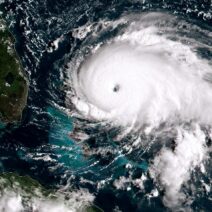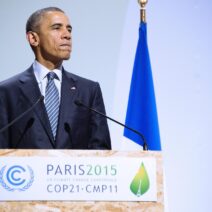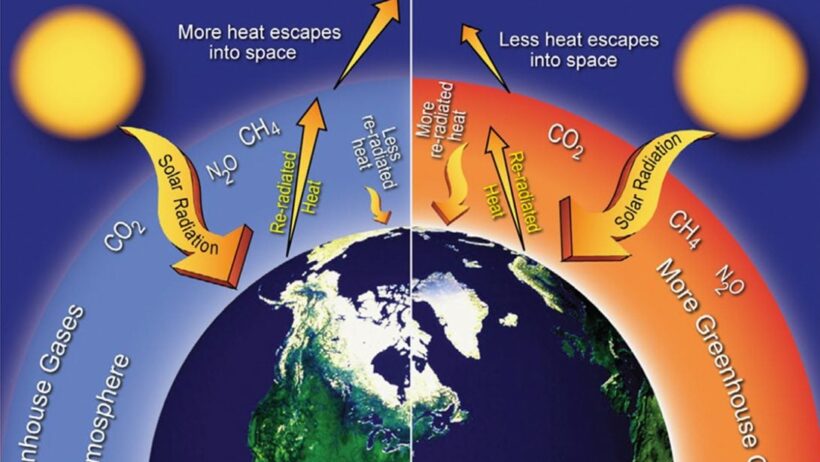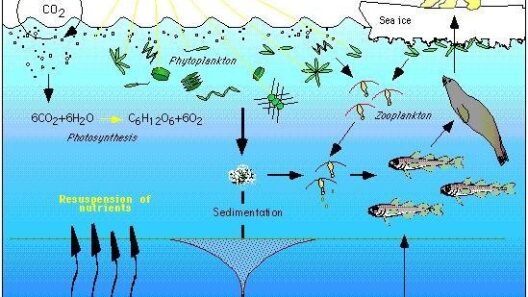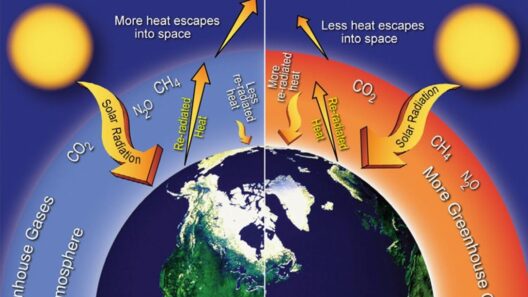The greenhouse effect and global warming are intrinsically linked yet often misunderstood concepts that play a crucial role in our planet’s climate dynamics. The greenhouse effect refers to the process by which certain gases in Earth’s atmosphere trap heat, thereby warming the planet. This natural phenomenon enables life as we know it; however, human activities have significantly amplified its intensity, leading to global warming. Understanding whether the greenhouse effect directly causes global warming requires a nuanced exploration of both phenomena.
At its core, the greenhouse effect is a natural and necessary aspect of Earth’s climate system. Solar radiation enters the atmosphere, with a portion being absorbed by the Earth’s surface, warming it. Subsequently, the planet emits this absorbed energy back into space in the form of infrared radiation. However, greenhouse gases—such as carbon dioxide (CO2), methane (CH4), and nitrous oxide (N2O)—absorb some of this outgoing radiation and re-radiate it in all directions, including back towards the surface. This exponential trapping of heat creates a warming effect that is pivotal in maintaining an average temperature conducive to life.
However, the predicament arises when human activities, especially since the Industrial Revolution, have caused a significant increase in the concentration of greenhouse gases in the atmosphere. The burning of fossil fuels for energy, deforestation, and industrial processes contribute to elevating CO2 levels, which enhances the greenhouse effect beyond its natural balance. This greater retention of heat prompts a rise in global average temperatures. Thus, while the greenhouse effect itself is a natural process, it is the intensified version spurred by anthropogenic actions that directly contributes to global warming.
To explore further, one must consider the mechanisms of climate feedback loops. These loops are processes that can amplify or diminish the effects of climate drivers. For instance, as global temperatures rise, polar ice and glaciers melt, reducing albedo—the reflectivity of surfaces. With less ice to reflect sunlight, more heat is absorbed by the oceans and land, further exacerbating warming. This feedback mechanism illustrates how the greenhouse effect, when intensified by human-induced emissions, can create a vicious cycle of climate change that continues to accelerate global warming.
Another dimension to consider is the differential impact of various greenhouse gases. While CO2 is the most abundant anthropogenic greenhouse gas, contributing approximately three-quarters of the warming effect, methane and nitrous oxide possess a far greater warming potential on a per-molecule basis. Methane, for example, can trap heat more effectively than CO2 for a limited period but has a shorter atmospheric lifespan. Understanding these variances is vital, as some gases may exert their warming effects more immediately, while others, like CO2, linger and continue to influence climate for decades, if not centuries.
Furthermore, regional effects must be accounted for to appreciate the full scope of global warming as a consequence of the greenhouse effect. Different geographical areas experience the impacts of global warming variably, depending on local factors such as ocean currents, topography, and land use. For instance, areas with vast forest cover may see different warming effects from places heavily reliant on agriculture or urbanization, leading to variable climate impacts. This complexity underscores the need for localized climate action and policy that address specific regional needs and vulnerabilities.
Critically, the ramifications of global warming and the greenhouse effect extend beyond temperatures and weather patterns. Ecosystem dynamics are profoundly altered as species face shifting habitats and altered resources. Some species may thrive under warmer conditions, while others may suffer or face extinction due to their inability to adapt quickly enough. This biodiversity loss represents a fundamental threat to not only ecological balance but also the human reliance on natural systems for food, clean water, and health.
The interconnection between the greenhouse effect and global warming also calls attention to the socio-political dimensions of climate change. Efforts to mitigate the effects of the greenhouse effect require a comprehensive approach that includes reducing greenhouse gas emissions, enhancing energy efficiency, and transitioning to renewable energy sources. However, resistance from vested interests often complicates these efforts. Addressing climate change requires not only scientific understanding but also ethical considerations regarding responsibility, equity, and justice.
The conversation surrounding the greenhouse effect and its role in global warming is fraught with misconceptions. Some may question the validity of climate science or attribute the changes merely to natural cycles. However, the overwhelming consensus among scientists is clear—human activities have markedly intensified the greenhouse effect, leading to significant warming that jeopardizes planetary health. As facts become increasingly difficult to contest, the urgency of action grows.
It is imperative for individuals, institutions, and governments to recognize their role in either exacerbating or alleviating the greenhouse effect. Collective action, informed by rigorous scientific understanding, can shift the trajectory of climate change. The transition to a sustainable future hinges on global cooperation, technological innovation, and a steadfast commitment to protecting the environment. The relationship between the greenhouse effect and global warming is not merely a scientific inquiry; it is a defining challenge of our time, beckoning us to confront it with resolve and clarity.
In conclusion, the greenhouse effect does directly cause global warming, particularly through human activities that amplify this natural phenomenon. The intricacies of climate feedback mechanisms, regional disparities, and socio-political implications further illustrate the complexities of this relationship. Acknowledging and addressing these factors are essential steps in forging solutions to safeguard our planet for future generations.
